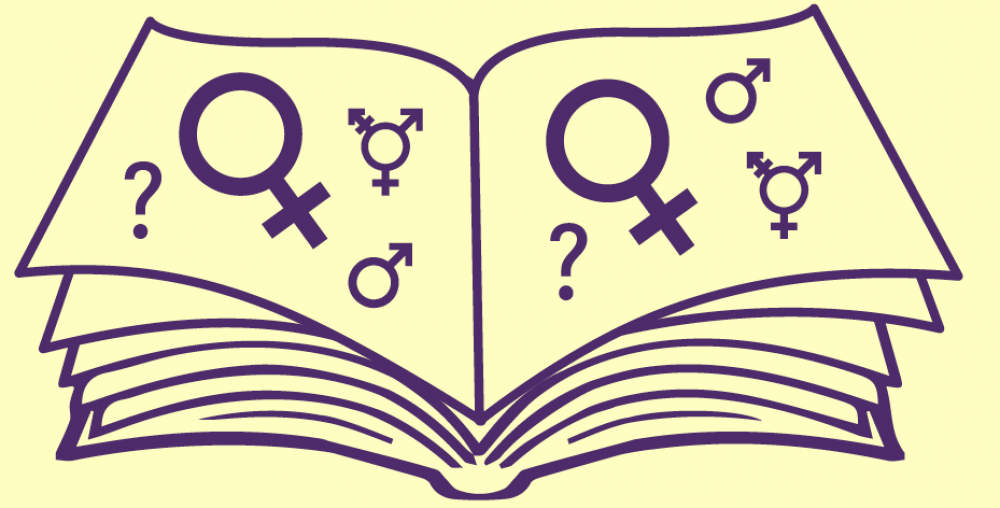Race is not the main focus of the novel but race isn’t ignored completely. Esther doesn’t disclose her racial status but how she describes everyone else does show that it is based on white/ Caucasian people. Male or female, everyone is described to have white features, as Esther states about Doreen’s “… cotton candy fluff hair round her head and blue eyes like transparent agate marbles…” (Plath, 4). A person of color cannot have what Doreen has. Other than that she describes Hilda as “… six feet tall, with huge, slanted green eyes and thick red lips and a vacant expression.” (Plath, 28). “…Mr. Willard’s face– the silver hair in its boyish crewcut, the clear blue eyes, the pink cheeks,…” (Plath, 87). These are only a few but everyone Easter talks about has these white features and skin color.
Esther explained everyone’s looks in a nice manner until a “Negro” (Plath, 180) came instead of a white male nurse. The way she describes him, it seems like he’s a kid because he’s goofing around with whatever he’s told to do. I believe she looks down at him because he is black and in 1950 it was still rare for an African American to actually work with white society. She kicks him on his leg and hurts him. It could be because she’s in an asylum and is being treated or it could be because he’s annoying her and calling her “Miss Mucky-Muck,” (Plath, 181) she doesn’t make it clear why she doesn’t like him.
In “Age, Race, Class, and Sex” there are all these topics that women faced back then. Lords is a forty nine year old black lesbian feminist who’s is talking about how the people do not fit into society roles are suppose to teach the ones that do fit. She talks about the differences of race, “Certainly there are real differences between us of race, age, and sex. But it is not those difference between us that are separating us. It is rather our refusal to recognize those differences…” (Lorde, 115). Maybe that’s what it was, Esther was so used to of seeing white and rich society around her that when she saw someone different, she didn’t take him as a human or as a part of their society. But rather as a slave, because he was working there with the nurse.




Great point made all around the novel focus is not on race but then it isn’t ignored completely. I feel the reason she kick him is because she felt that she was above him in every way possible and that even if she is locked up in there to not to look down on her.
True, even though she is locked away, she still feels superior. She acts as if she in a restaurant when the boy comes to pick up the dishes, saying they’re not done yet and feels watched while he waits. She does give us a very negative impact of herself there.
Hi Nabeela, I agree with you. I also believe that the novel does not focus on race entirely but it does focus on Esther’s race and the privileges that she has. It is true that she doesn’t disclose her race but the characteristics as you described of Doreen and Mr. Willard does presume her race as people situate themselves with others like themselves especially during this time.
Exactly, she is too self centered in this book, dealing with her own depression that she forgets there is another world outside of her home.
Yes I really like some of your points you have there. Throughout the book Esther describes other people with much more meaning, and sometimes it seems she might even be studying them, but once the boy with color entered the room she just labels him with this one word; “negro” without understanding or knowing where he comes from or what is background consist off. Esther is taught to judge people by what they look like however she struggles to have people not judge her.
I agree, she is in position to judge. If anything she is the one going crazy and in an asylum. So I don’t see how she just calls the boy “negro” when he shows up. Also he’s only there for a very short period. Which again shows that Esther has no interest in talking about anyone else but herself and her own race.
in no position*
Yes I really like some of your points you have there. Throughout the book Esther describes other people with much more meaning, and sometimes it seems she might even be studying them, but once the boy with color entered the room she just labels him with this one word; “negro” without understanding or knowing where he comes from or what is background consist off. Esther is taught to judge people by what they look like however she struggles to have people not judge her.